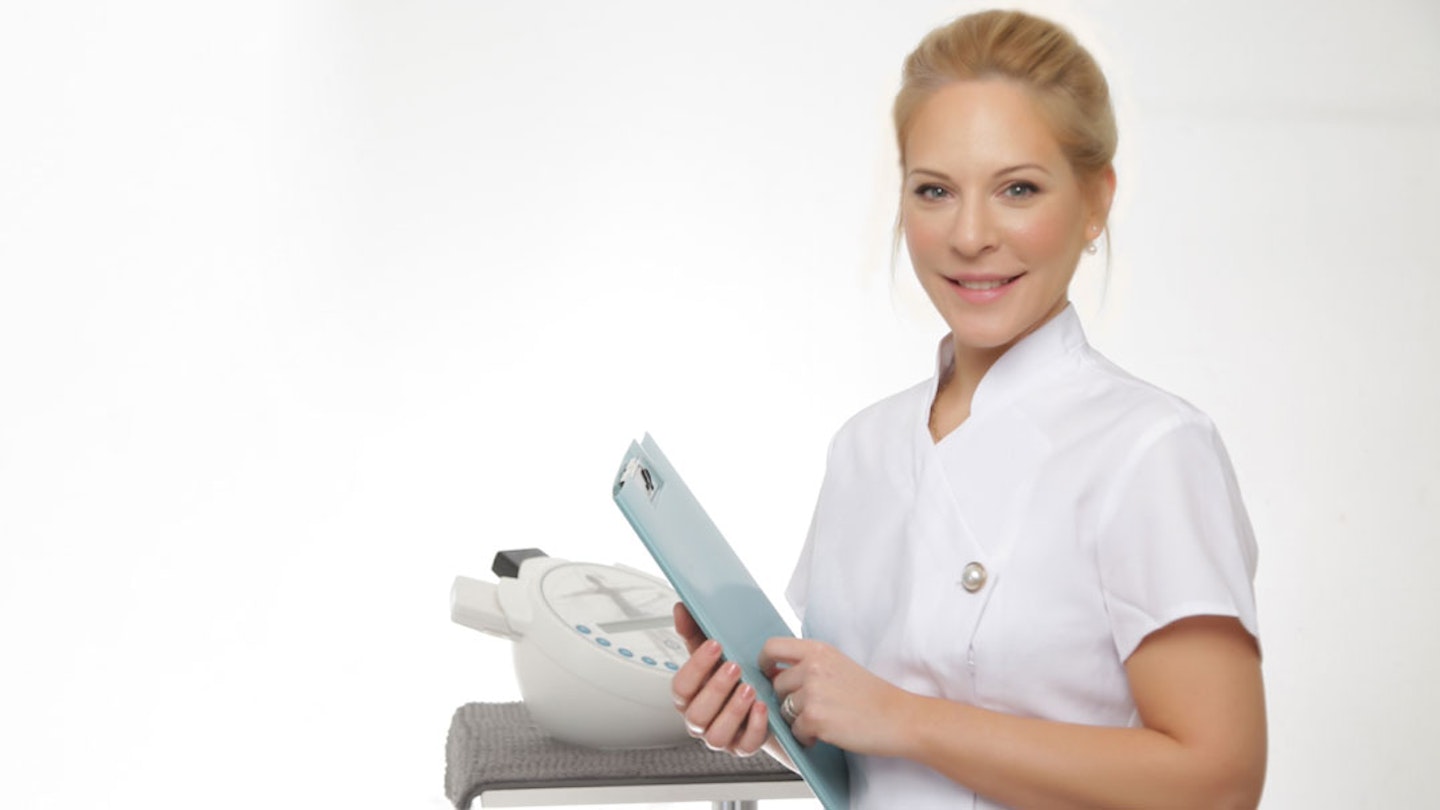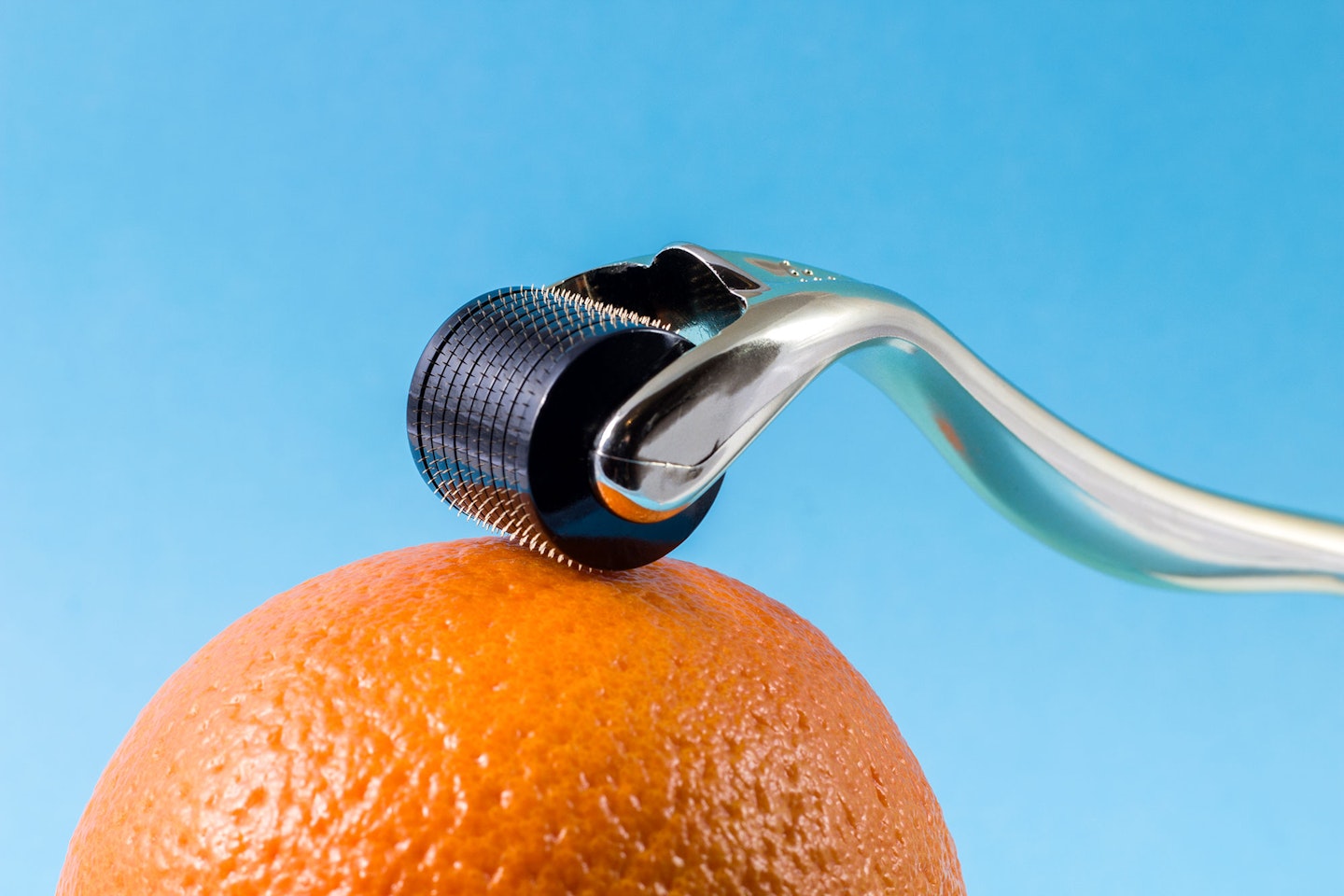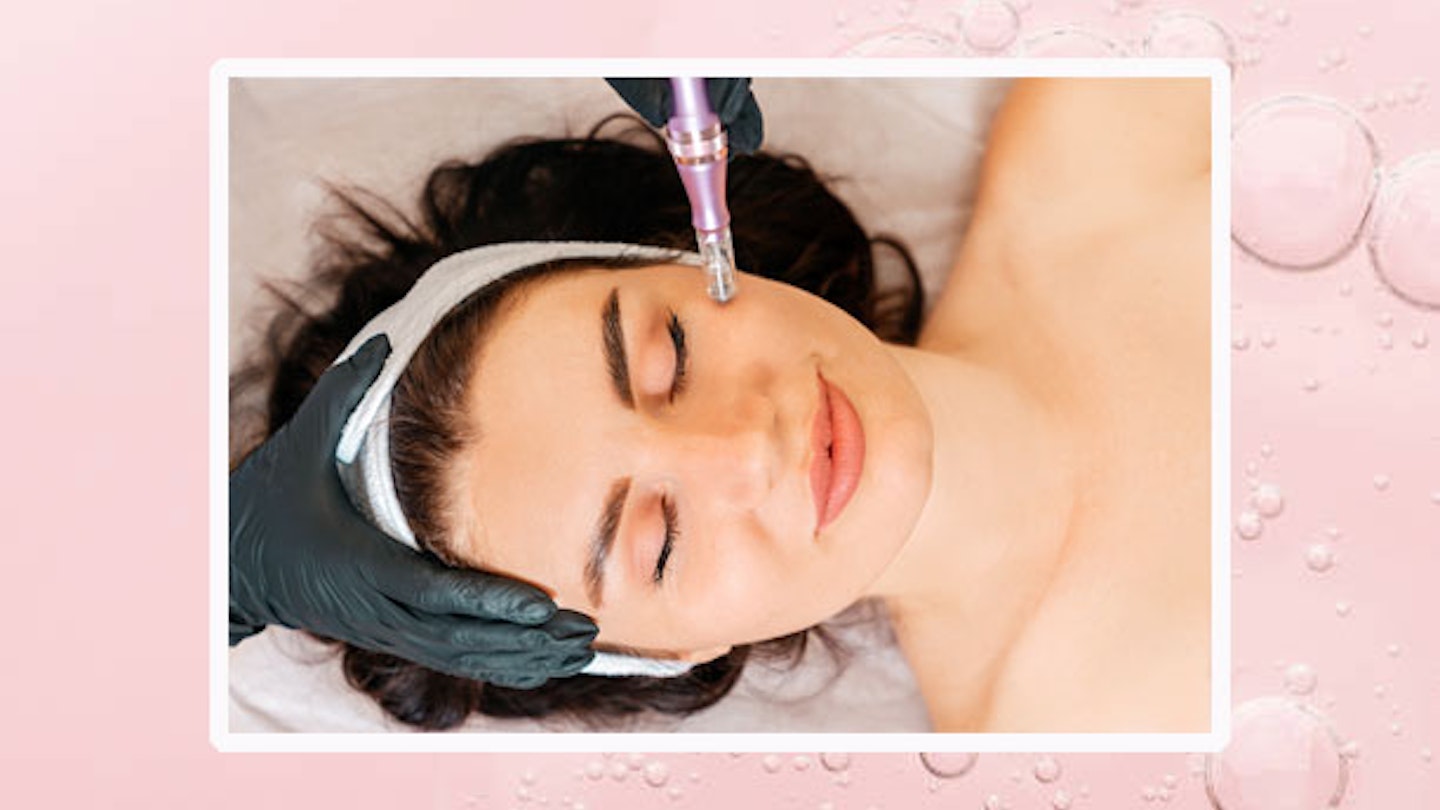Our skincare regimes have really ramped up a gear in the last couple of years, as we try to nail down skincare routines and treatments that suit our needs. Especially as we're all so different and unique. From finding the best products for combination skin to everything you need to know about exfoliation - every day is a school day.
We're even willing to find out more about specific procedures we can have to help our skin live its best life.
The benefits of microneedling, that has risen in popularity in recent years thanks to swanky technology, have been hailed by dermatologists for decades (since 1995, in fact), but the whole thought of needles in our face has been a little, well, scary.
According to Healthline, microneedling is mostly used on the face and is believed to help reduce the appearance of acne, scars, dark spots, wrinkles and large pores. It can also work its magic on fine lines and wrinkles, sun damage, and stretch marks.
However, there's a lot more to learn about microneedling, including the cost and risks involved...
What is microneedling?
To avoid any confusion, we spoke to Eva Blasco, Founder of Eudermic, Skin Expert, Beauty Therapist and Nutritional Coach, to find out what exactly microneedling is and what it entails and she delivered the goods.

"Microneedling or dermal rolling is a treatment modality used for collagen channelling for natural collagen induction therapy. During the process a special roller is used which has up to 200 tiny stainless steel needles that ‘puncture’ the epidermis when rolled over the skin's surface," explains Eva.
"A Dermapen can also be used which mechanically and continuously makes microscopic holes of selectable lengths. The principle behind collagen channelling and the dermal needling treatment is simple. When the skin is rolled, (Under topical or local anaesthetic) it creates tiny channels deep into the dermis of the skin.
"These deep channels cause keratinocytes and fibroblasts to produce numerous growth factors that induce collagen synthesis. The stimulation of growth factors is how the body naturally rebuilds skin density and integrity, and is the wound healing process."
She adds, "When rollers or Dermapens are used in conjunction with specially formulated creams, specific cells can be targeted for maximum therapeutic effect, such as anti-ageing reduction of pigmentation and scars. Dermal rolling is very safe when conducted correctly, and heals quickly while preserving an intact epidermis."
What are the risks of microneedling?
When we look at the pictures of microneedling, it's easy to get a little distracted by the er, needles in your actual face, but like every cosmetic procedure, there are some risks. Do they outweigh the positives though? It's completely depends on your decision.

Eva tells us, "Like all cosmetic procedures, microneedling is not without risk. The most common side effect is mild skin irritation right after the procedure.
"Clearly, the importance of this irritation depends, in addition to the subjective characteristics, on the depth and duration of the treatment."
Does microneedling hurt?
Many microneedling fans have said that the procedure doesn't exactly hurt, but it may feel uncomfortable. If you're not a fan of needles, it might not be the one for you.
How much does microneedling cost?
A session can be anytime between 40 and 60 minutes. On the other hand, its price ranges between £150-£300, although the price will vary depending on the number of sessions and the products applied. In fact, some microneedlings are more expensive because the active ingredients that are introduced into the skin are more concentrated and much higher than average.
Can I do microneedling at home?
The experts that we spoke to said that you can do microneedling at home, but the possibility of skin infections can be higher than in a salon environment as the punctures can transmit bacteria in depth or even facilitate their penetration.
You may be able to buy devices through your practitioner, which is encouraged as devices will have guaranteed sterility and will be genuinely CE marked. Deeper penetrating microneedling devices may cause more damage used by the untrained.
What are the side effects for microneedling?
Side effects such as redness, swelling, dryness and sometimes bruising can occur.
What are the benefits of microneedling?
Award-Winning Aesthetic Practitioner and founded of CB Aesthetics Alex Henderson, insists that there are so many benefits when it comes to microneedling and your skin will be thanking you if you do it more than, say, once a year.
Alex says, "Microneedling monthly has many benefits to skin health due to the micro trauma stimulating collagen production resulting in a tighter and brighter-looking appearance. It can help improve fine lines and wrinkles and also help reduce the appearance of small scars.
"Because a practitioner can use longer needles, this can help break up the fibrous scar tissue, by releasing these fibres any scar tissue will look improved, however, results will vary per person, and it should be known that this wouldn’t be a quick fix or cure to complicated skin rejuvenation. But be assured you will see a difference which looks natural and is long-lasting."
Other benefits include:
● Suits all skin types
● Suitable for thin skin
● Rapid healing
● Minimal downtime
● Cost effective compared to other ablative therapies
● Safer than other ablative therapies
● Minimal discomfort
● Minimal/no side effects
● No post light sensitivity
Can microneedling cure acne scars?
Alex says yes, as as well as promoting the formation of new skin cells and accelerating healing, microneedling also breaks down old scar tissue.
She explains, "To get the most out of this treatment, you’ll need multiple microneedling sessions. This depends on the severity of your acne scars, but speaking to your practitioner will give you an idea of how many treatments you’ll need."
